Digital Anastylosis of Frescoes challeNgE (DAFNE)
NOTICE of Challenge for Cash Awards
The contest is over (submissions closed on July 15, 2019) -
thanks for participating!
Please find here the
>>
Notification of the best submissions and announcement of the winners
>>
DAFNE dataset (now publicly available)
1. Context, organizers, and awards
Context. This is an invitation to participate in the international
Digital Anastylosis of Frescoes challeNgE (DAFNE), concerned with collecting outstanding contributions to the field of Anastylosis. The goal is to develop tools enabling digital reconstruction of heavily damaged frescoes, supporting their restoration through the solution of the ‘puzzles’ formed by the remaining fragments, often mixed with spurious elements. Participants are invited to develop solutions that re-assemble a given set of pieces, discarding spurious ones, and are required to submit the reconstructed image generated by their application, which will be evaluated in accordance with the quality requirements and metrics laid down below in Paragraph
5. Definition of the evaluation process. Detailed instructions for submission are provided in Paragraph
3. Submission procedure.
Organizers. The challenge is supported by six different institutions, with considerable experience and prestige in the organization of academic challenges, namely:
1. Rotary DISTRETTO 2031
(*), 2032, 2042, 2050
(**), 2060, 2072, 2080, 2090, 2100, 2110, 2120
2. CVPL (Italian Association for Computer Vision, Pattern Recognition and Machine Learning)
3. AICA (Associazione italiana per l'Informatica ed il Calcolo Automatico)
4. Autism Laboratory - University of Pavia
5. EVA FLORENCE (Electronic Imaging & the Visual Arts - Florence)
6. CVML (Computer Vision & Multimedia Lab) - University of Pavia
Their representatives are members of the Challenge Committee.
The results will be presented at the
20th ICIAP conference (ICIAP 2019), to be held in Trento, Italy (9-13 September, 2019). The International Conference on Image Analysis and Processing (ICIAP) is an international forum for discussions on recent advances in the fields of Pattern Recognition, Machine Learning and Computer Vision, and on applications of these technologies in various fields.
Awards. During the ICIAP 2019 conference, winning participants will be awarded a cash prize. There are three awards: 1) a
metric award (4,000.00 EUR), attributed on the basis of a metric assessment, which takes into consideration the size of the correctly reconstructed fresco; 2) an
inclusion award (2,000.00 EUR), reserved for participants who belong to the autism spectrum, as certified by an official health agency; 3) a
high tech award (2,000.00 EUR), for the best computer application, to reward the most novel, innovative contribution (even though it may not achieve the highest score). The prizes are sponsored by Rotary, CVPL, and AICA and are subject to their restrictions and requirements. Winners will be asked to identify a recipient - an individual or entity - who will be required to provide tax documentation.
The best performing algorithm will be published in the ICIAP proceedings and, after a peer review, an extended version will be published in a dedicated “Virtual Special Issue” of Pattern Recognition Letters.
2. Description of the subject to be tackled
DAFNE is a challenge for the development of a digital reconstruction-of-frescoes application. A dataset of frescoes, each consisting of a set of digital fragments of the well-known original fresco mixed with spurious elements (distractors), will be available to registered participants. Two phases will be considered:
>>
Development phase: Registered participants will be provided with a dataset of fragments from well-known frescoes and the relative ground truth solution. The following will be given for each fresco: i) the fragments from the image of the fresco - possibly with distractors from other frescoes; ii) the original image of the fresco; iii) the solution (an image file with each fragment provided in the right position).
>>
Testing phase: Registered participants are provided with a dataset of fragments from the image of a limited number of fresco cases – possibly with distractors from other frescoes – and the original image of the corresponding fresco. No ground truth solution is provided.
Participants are required to submit their solutions, consisting in images showing the fragments properly placed. For AI solutions, code and run-time file to be used when testing the proposal should also be submitted.
Dataset characteristics. The dataset provided (
ANASTYLOSIS DB1 for development and ANASTYLOSIS DB2 for testing) will be available to registered participants on different specified dates. Their use is restricted to the fulfilment of the challenge’s objectives and related papers publication. The dataset for the development phase includes, for each fresco, a set of fragments and the expected reconstructed image, while the dataset for the testing phase includes, for each fresco, a set of fragments but does not provide the corresponding reconstructed image.
The datasets are designed to be realistic, natural and challenging for cultural heritage domains in terms of their resolution, diversity in scenes, and pictorial assets. The fragments are obtained from each fresco through a random plane tessellation with suitable statistics (uniform or with a few clusters as shown in the
Annex), with an erosion process applied to each fragment.
The datasets' distinguishing characteristics are quantized by the following five basic parameters:
• A: number of fragments
• B: type of random distribution
• C: percentage of missing fragments
• D: percentage of spurious fragments
• E: average ratio between the fragment area after the erosion and the original area in the fresco plane tessellation.
Acknowledgements. The dataset collection is supported by the Challenge Committee. Any opinions, findings and conclusions or recommendations expressed in the datasets are those of the organizers and do not necessarily reflect the views of the sponsors.
Citation Information. If you make use of the datasets provided for this challenge, please use the citation for the ICIAP conference and the dedicated “Virtual Special Issue” of Pattern Recognition Letters.
3. Submission Procedure
There is no charge for participation and participants may submit one or more run-time applications, with the corresponding code and a 4-page paper describing the methods used.
In order to participate in the challenge, each participant is requested to fill in and submit a registration form.
Development and testing datasets will be made available to registered participants. To download the datasets, registered participants will receive instructions in the Registration Confirmation e-mail. Participants will develop their solutions using the development and testing data provided.
The Challenge organizers will start the evaluation process and will send the results to the e-mail address specified in the registration form.
Instructions for file submission
1. Preliminary registration is required. The form to be filled in is available till May 31, 2019.
2. The ANASTYLOSIS DB1 dataset will be made available for the development phase; the ANASTYLOSIS DB2 dataset will be made available for the testing phase.
3. Participants must submit an archive containing: images of the reconstructed frescoes (to be named RECONSTRUCTED_fresco{1,2,3,...}), in PNG lossless image format (an image of the original fresco with a grey background, with overlapping coloured fragments); for each reconstructed fresco, a table listing - for each fragment - its identification number, the co-ordinates of the centre of the rectangular box that circumscribes the fragment, and the angle of rotation applied to the fragment, in order to locate its exact location and orientation; for AI approaches, source code file and corresponding run-time file (possibly with libraries and a README file) are also required, together with a PDF file containing a description of the method used. The archive must be sent to
daf-challenge-group@unipv.it after registration. Confirmation of receipt and eventually further instructions will be e-mailed to the e-mail address specified during registration.
4. Each run-time application should be self-contained and have no Internet access. No additional download should be supplied to run the application. The submitted proposal should thus contain all supporting files (dlls, libraries and so on) required to run the application properly.
5. Each run-time application should produce an image solution file; instructions for its proper running must be included, as they will be used to verify results from the reconstructions of frescoes other than those provided for testing.
6. The application can be written in any programming language and should run on one of the following operating systems: (1) Windows 10, (2) Linux Ubuntu 18.04. Where special settings are needed for the proper running of the algorithm, a README file should be supplied.
7. Applications that do not meet the above requirements will be excluded at the discretion of the Evaluating Committee.
4. Eligibility criteria, judging and Challenge rules
1. The Challenge is open to the public, but employees of the organizing institutions who are involved in or related to the Evaluating Committee are not eligible.
2. Participants may form teams with a maximum of four people.
3. Any cheating behaviour will lead to disqualification, which includes but is not limited to: failure to abide fully by the rules of the Challenge and false registration information.
4. The judging will be carried out by designated representatives of the Organizers. All awards and winner determinations are at the sole and exclusive discretion of the Evaluating Committee and participants agree, as a condition of their participation, that they will waive any right to contest the results.
5. The Organizers shall have the sole and exclusive right to interpret all of the Challenge rules, and their interpretation shall be final and determinative.
6. Participants grant the Organizers and the ICIAP Conference a royalty-free right to publish information about the participants, including information in online and offline publications.
7. The winners shall be solely responsible for all taxes associated with the receipt of any award.
5. Definition of the evaluation process
The submitted results will be evaluated in relation to the total area of the image (in pixels) that is properly covered on the subset of the fresco consisting of the original fragments delivered for the final testing phase. The area relating to spurious fragments will be subtracted.
For AI solutions, the run-time file is required to allow the Evaluating Committee to test the result implementing the application on the dataset test images and comparing it with the precisely known ground truth.
6. Important Dates
• February 27, 2019: registration opens / release of the DAFNE ANASTYLOSIS DB1 dataset for the development phase
•
May 31, 2019 June 15, 2019: registration closes
• June 3, 2019: release of the DAFNE ANASTYLOSIS DB2 dataset for the testing phase
• June 27, 2019: submission opens
• July 15, 2019: submission closes
• July 31, 2019: notification of the best submissions and
announcement of the winners
7. Support and contacts
Send any queries to:
daf-challenge-group@unipv.it or
virginio.cantoni@unipv.it
Annex. Examples
Some sample pictures. To enlarge click on the image.
Plane tessellation and ground truth (original image in grey background, with overlapping coloured fragments) for: "Cesare Nebbia -
The Plague of Milan, 1604"; "Giovanni da Modena,
The Return of the Magi, 1412"; "Andrea Mantegna,
Camera picta, 1474"
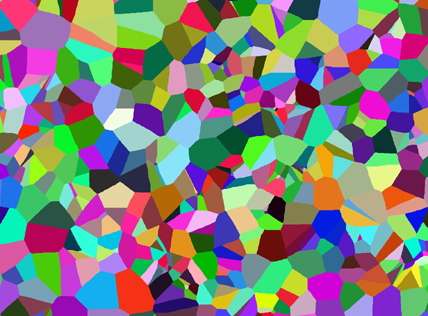
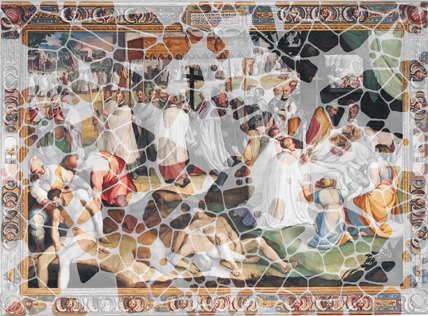
Plane tessellation (parameters: A=500; B=random distribution with clusters; C=22.5%; D=0%; E=0.12) and Ground Truth
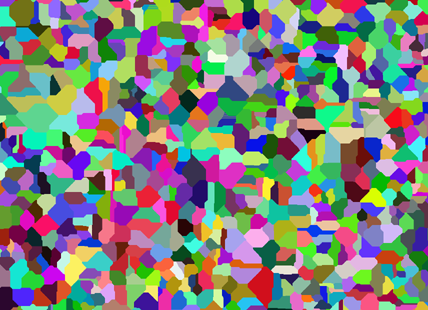
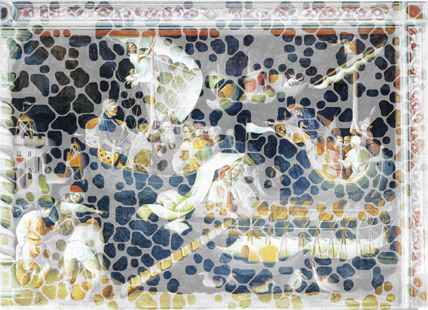
Plane tessellation (parameters: A=750; B=uniform distribution; C=7.5%; D=0%; E=0.8) and Ground Truth
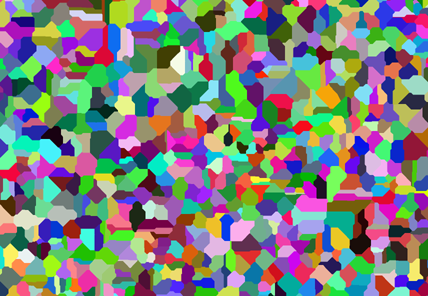
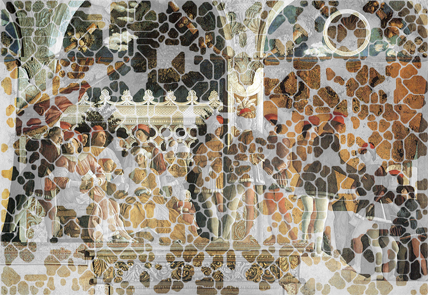
Plane tessellation (parameters: A=750; B=uniform distribution; C=15%; D=15%; E=0.8) and Ground Truth
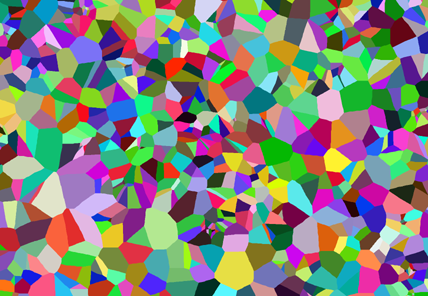
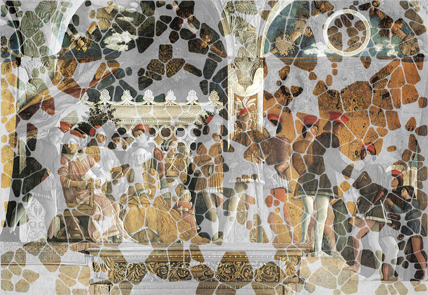
Plane tessellation (parameters: A= 750; B=random distribution with clusters; C=22.5%; D=0%; E=0.12) and Ground Truth
(*) R.C. Orta San Giulio, R.C. Torino, R.C. Aosta, R.C. Courmayeur Valdigne, R.C. Novara, ICWRF (Italian Culture Worldwide Rotarian Fellowship), FRACH - Costituenda Fellowship (Fellowship of Rotarians who Appreciate Cultural Heritage)
(**) R.C. Pavia, R.C. Pavia Minerva, R.C. Pavia Ticinum, R.C. Certosa







